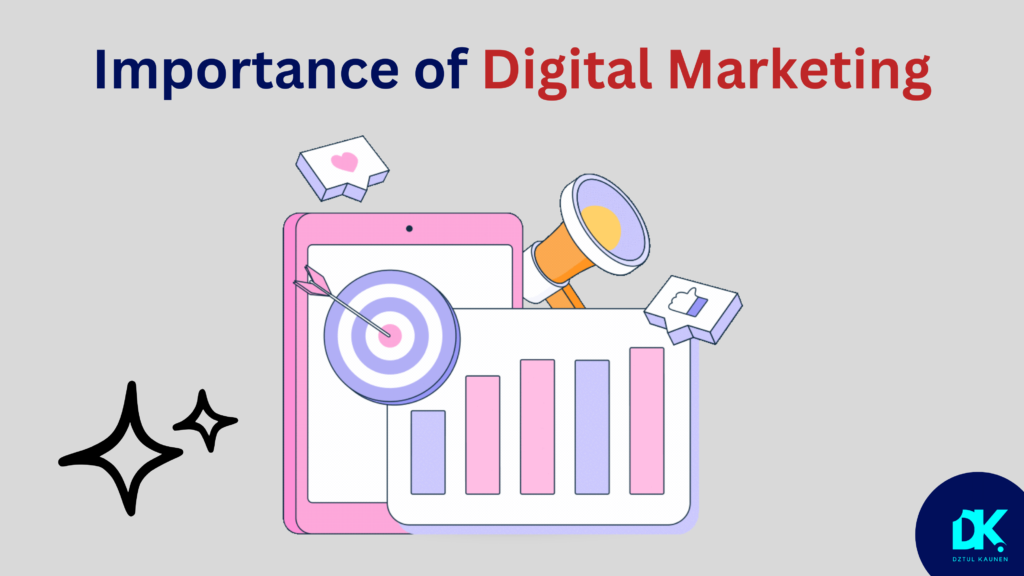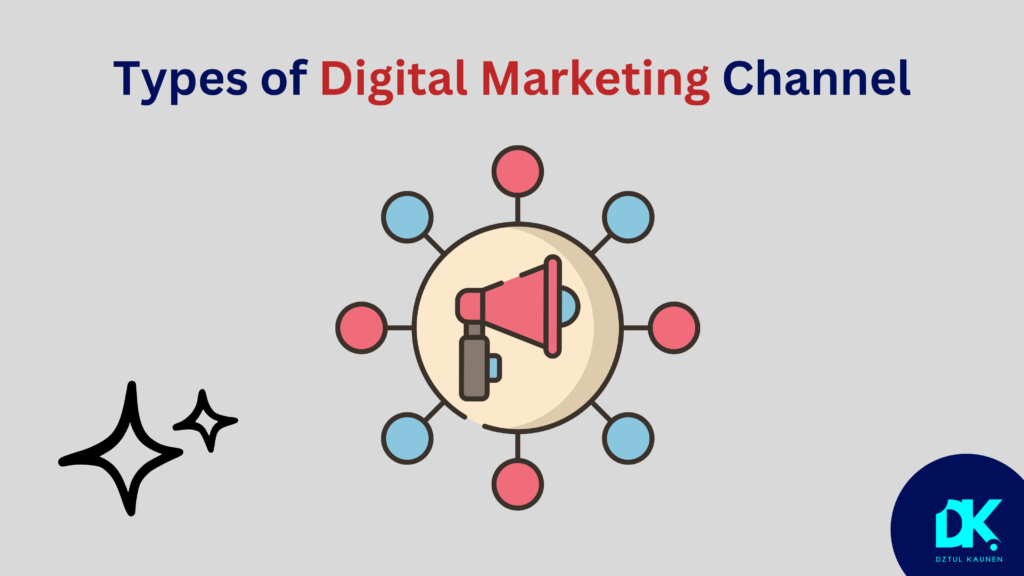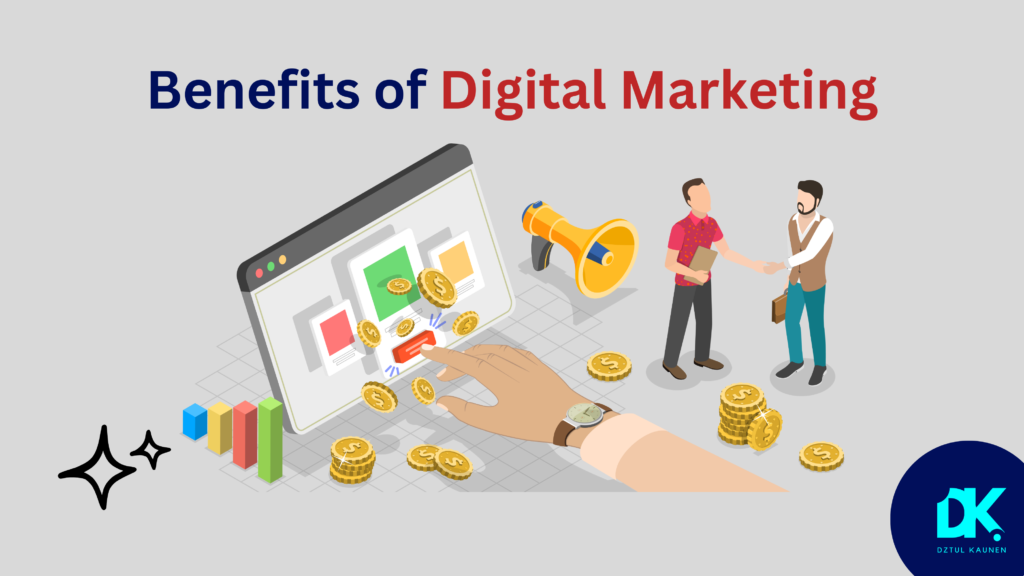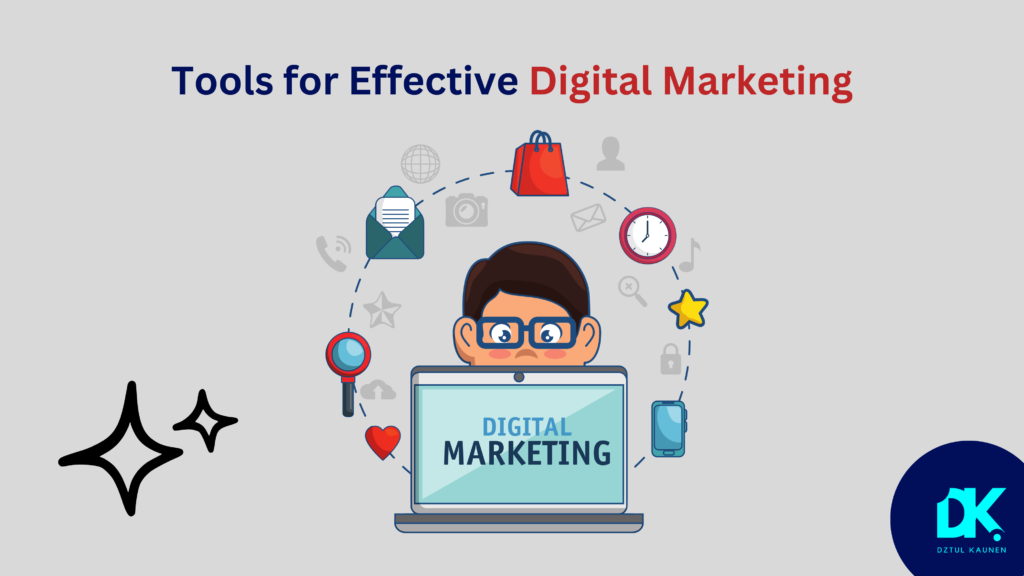Table of Contents
- What is Digital Marketing?
- Importance of Digital Marketing
- Types of Digital Marketing Channels
- Benefits of Digital Marketing
- How to Start with Digital Marketing
- Common Mistakes in Digital Marketing
- Best Practices for Digital Marketing Success
- Tools for Effective Digital Marketing
- Challenges in Digital Marketing
- Future Trends in Digital Marketing
- The Importance of Continuous Learning in Digital Marketing
- Building Strong Customer Relationships Through Digital Marketing
- The Role of Analytics in Shaping Digital Marketing Strategies
- The Impact of Mobile Marketing in Digital Campaigns
- Combining Digital Marketing with Performance Marketing
- Leveraging SEO to Enhance Digital Marketing Success
- FAQs
- Conclusion
1. What is Digital Marketing?
Digital marketing refers to promoting products or services through online platforms like search engines, social media, email, and websites. Businesses leverage digital technologies to engage customers, build brand awareness, and drive sales.
In simple terms, what is digital marketing? It’s a blend of strategies that target specific audiences with precision, allowing brands to optimize resources and achieve measurable results. Digital marketing’s ability to deliver data-driven insights and tailor campaigns makes it indispensable in today’s competitive environment.

2. Importance of Digital Marketing
To grasp what is digital marketing, it’s essential to understand its importance in the modern business landscape:
- Global Reach: Digital marketing breaks geographical barriers, enabling businesses to target audiences worldwide.
- Cost-Effective Solutions: Compared to traditional advertising, digital marketing provides cost-efficient ways to promote your brand.
- Measurable Results: With tools like Google Analytics, businesses can track campaign performance and ROI accurately.
- Real-Time Engagement: Digital platforms allow instant interaction with customers, enhancing relationships and brand loyalty.
- Adaptability: Businesses can adjust strategies quickly based on performance data, ensuring optimal results.

3. Types of Digital Marketing Channels
Digital marketing encompasses various channels, each with unique strengths:
- Search Engine Optimization (SEO): Optimizing your website to rank higher on search engine results, driving organic traffic.
- Pay-Per-Click Advertising (PPC): Paid ads on platforms like Google Ads that charge per click, ensuring precise targeting.
- Social Media Marketing: Engaging audiences through platforms like Facebook, Instagram, and LinkedIn.
- Content Marketing: Creating valuable, informative content to attract and retain an audience.
- Email Marketing: Sending personalized messages to nurture leads and maintain customer relationships.
- Affiliate Marketing: Partnering with affiliates to promote products and earn commissions on sales.
- Mobile Marketing: Reaching audiences through SMS, apps, and mobile-optimized websites.

4. Benefits of Digital Marketing
Digital marketing offers several advantages that define what is digital marketing as a game-changer:
- Precise Targeting: Advanced tools allow businesses to reach specific demographics based on age, location, behavior, and interests.
- Higher Engagement Rates: Interactive formats like polls, videos, and quizzes boost customer engagement.
- Improved Conversion Rates: Well-targeted campaigns lead to higher conversions, directly impacting revenue.
- Data-Driven Decision Making: Analytics provide actionable insights to optimize campaigns and strategies.
- Brand Credibility: A robust online presence establishes trust and authority in the market.

5. How to Start with Digital Marketing
Starting with digital marketing requires strategic planning and execution:
- Define Goals: Set clear objectives, such as increasing website traffic, generating leads, or boosting sales.
- Know Your Audience: Conduct research to understand your audience’s preferences and behaviors.
- Select Channels: Choose platforms that align with your target audience and business goals.
- Create a Content Plan: Develop a consistent schedule for publishing high-quality content.
- Track and Optimize: Use analytics to monitor performance and refine your strategies.

6. Common Mistakes in Digital Marketing
To avoid pitfalls, understand what not to do in what is digital marketing:
- Ignoring SEO: Neglecting search engine optimization can reduce visibility and organic traffic.
- Overlooking Mobile Users: Failing to optimize for mobile devices alienates a significant portion of your audience.
- Inconsistent Branding: A lack of cohesive messaging weakens brand identity.
- Overloading Ads: Excessive advertising without value-driven content annoys customers.
- Neglecting Data: Ignoring analytics leads to missed opportunities for improvement.

7. Best Practices for Digital Marketing Success
Ensure success in digital marketing by following these practices:
- Invest in Quality Content: High-quality, engaging content attracts and retains customers.
- Focus on User Experience: A user-friendly website and seamless navigation boost retention rates.
- Leverage Automation: Tools like email automation save time and enhance efficiency.
- Personalize Campaigns: Tailored messages resonate better with audiences.
- Stay Updated: Keep up with trends and algorithm changes to remain competitive.

8. Tools for Effective Digital Marketing
Mastering what is digital marketing involves using the right tools:
- Google Analytics: For tracking website performance and user behavior.
- SEMRush: For SEO and competitive analysis.
- HubSpot: For email marketing and lead management.
- Canva: For creating stunning visuals.
- Hootsuite: For scheduling and managing social media campaigns.

9. Challenges in Digital Marketing
Despite its benefits, digital marketing comes with challenges:
- Constant Evolution: Rapid changes in technology and algorithms require continuous learning.
- High Competition: Saturated markets make it harder to stand out.
- Privacy Concerns: Striking a balance between personalization and data privacy is crucial.
- Limited Budgets: Smaller businesses struggle to compete with larger corporations.
- Content Overload: Cutting through the noise to deliver impactful messages is a persistent challenge.

10. Future Trends in Digital Marketing
Stay ahead with these emerging trends:
- AI and Machine Learning: AI-driven tools will enhance targeting and customer experiences.
- Voice Search Optimization: As voice search grows, optimizing for conversational keywords will become essential.
- Sustainability Marketing: Brands promoting eco-friendly initiatives will attract conscious consumers.
- Interactive Content: Polls, quizzes, and AR experiences will dominate marketing strategies.
- Blockchain for Advertising: Blockchain technology will improve transparency in digital ads.

11. The Importance of Continuous Learning in Digital Marketing
After understanding the trends shaping the future of digital marketing, it’s vital to recognize the importance of continuous learning in this field. As digital marketing evolves rapidly, staying updated with the latest tools, techniques, and platforms is not just an advantage but a necessity. For businesses to remain competitive, marketers must adapt to emerging technologies like artificial intelligence, blockchain, and augmented reality.
Moreover, grasping what is digital marketing requires a mindset of innovation and adaptability. Professionals should invest in online courses, attend industry conferences, and participate in webinars to stay ahead of the curve. Keeping up with algorithm changes in search engines and social media platforms is equally crucial, as these directly impact visibility and engagement rates.
Another critical aspect is analyzing consumer behavior, which is constantly influenced by cultural shifts, economic trends, and technological advancements. Businesses that understand these dynamics can craft more effective, personalized campaigns. Additionally, experimenting with new content formats like interactive media, live streaming, and gamification can help brands maintain their relevance in an ever-changing market.
By fostering a culture of learning and adaptability, businesses can ensure they not only understand what is digital marketing but also leverage its full potential to drive long-term success.
12. Building Strong Customer Relationships Through Digital Marketing
After diving into the future trends, it’s essential to emphasize the role of digital marketing in fostering strong and meaningful customer relationships. One of the core aspects of understanding what is digital marketing is recognizing that it’s not just about promoting products or services but creating long-term connections with the audience.
Digital marketing allows businesses to engage with customers at every stage of their journey. Personalized email campaigns, tailored social media content, and interactive experiences help brands resonate with their audience on a deeper level. This personalization fosters trust and loyalty, ensuring customers feel valued.
Furthermore, the use of real-time feedback mechanisms, such as polls and live chat support, allows brands to understand and respond to customer needs effectively. Consistent engagement, whether through informative blogs, quick responses on social platforms, or exclusive offers, keeps the audience invested in the brand.
In today’s competitive landscape, building a loyal customer base is as crucial as acquiring new customers. By focusing on creating meaningful relationships and delivering value at every touchpoint, businesses can ensure that their digital marketing efforts yield sustainable and impactful results.
13. The Role of Analytics in Shaping Digital Marketing Strategies
One of the most critical components of understanding what is digital marketing is the role of analytics in shaping successful strategies. Digital marketing thrives on data, and analytics tools empower marketers to make informed decisions. By analyzing website traffic, engagement rates, and conversion metrics, businesses can gain valuable insights into customer behavior and preferences.
Analytics also help identify which campaigns are performing well and which need improvement. For instance, tools like Google Analytics or HubSpot can show the most visited pages on a website, the sources of traffic, and user demographics. This information allows businesses to allocate resources more effectively, ensuring maximum ROI.
Additionally, predictive analytics is becoming a game-changer. It enables marketers to anticipate customer needs and trends, ensuring campaigns are not only reactive but also proactive. By regularly evaluating performance metrics and optimizing strategies based on data, businesses can ensure their digital marketing efforts remain efficient and effective.
14. The Impact of Mobile Marketing in Digital Campaigns
In today’s digital age, mobile marketing has become an integral part of understanding what is digital marketing. With a significant portion of internet traffic coming from mobile devices, businesses cannot afford to overlook this channel. From mobile-optimized websites to SMS campaigns and in-app advertising, mobile marketing provides a direct and personal way to connect with users.
The growing use of mobile wallets and location-based marketing further enhances the relevance of mobile strategies. Marketers can send targeted offers to users based on their geographic location, driving foot traffic to physical stores or boosting online sales. Additionally, with the rise of voice search and mobile-first indexing by search engines, optimizing content for mobile is no longer optional but a necessity.
Mobile marketing ensures brands stay connected with their audience anytime and anywhere, making it a cornerstone of any successful digital marketing strategy. By integrating mobile-focused campaigns with other digital channels, businesses can create seamless experiences that drive engagement and conversions.
15. Combining Digital Marketing with Performance Marketing
One of the advanced strategies for businesses exploring what is digital marketing is the seamless integration of performance marketing. While digital marketing encompasses a wide range of activities aimed at brand building and engagement, performance marketing focuses on driving measurable actions like clicks, leads, or sales.
Integrating performance marketing within a digital strategy ensures that campaigns are not only creative but also results-oriented. For example, running a pay-per-click (PPC) campaign under the broader umbrella of digital marketing allows brands to target specific audiences while tracking key performance indicators (KPIs). This fusion helps businesses allocate their budget efficiently and refine campaigns in real-time based on performance data.
By combining digital marketing’s creative approach with performance marketing’s analytical focus, businesses can create campaigns that are both impactful and cost-effective. This synergy ensures a holistic strategy that delivers tangible results while maintaining brand visibility.
16. Leveraging SEO to Enhance Digital Marketing Success
When learning what is digital marketing, it’s impossible to overlook the critical role of SEO. Search Engine Optimization (SEO) is the backbone of digital marketing, driving organic traffic and ensuring a brand's visibility on search engines.
SEO and digital marketing go hand in hand, as a strong SEO strategy amplifies the effectiveness of all digital channels. For instance, optimizing a website for search engines not only improves rankings but also enhances user experience, which contributes to higher conversion rates. Effective keyword research, on-page optimization, and backlink building are core SEO practices that boost the success of broader digital campaigns.
Additionally, SEO ensures that content marketing efforts reach the intended audience. Blog posts, landing pages, and product descriptions perform better when they are optimized for search engines. Understanding what is digital marketing requires recognizing that SEO is not just a standalone tactic but an essential part of a comprehensive strategy.
By leveraging SEO, businesses can build credibility, improve visibility, and ensure long-term success in their digital marketing efforts.
17. FAQs
What is digital marketing?
It’s the use of online platforms to promote products, engage audiences, and drive business growth.
How is digital marketing different from traditional marketing?
Digital marketing uses online channels and data-driven insights, while traditional marketing relies on offline methods like TV and print ads.
Which is the best digital marketing channel?
The best channel depends on your audience and goals; popular choices include SEO, social media, and email marketing.
How can small businesses benefit from digital marketing?
Digital marketing is cost-effective, enabling small businesses to compete with larger players by targeting niche audiences.
Is digital marketing a long-term investment?
Yes, a consistent digital presence builds brand loyalty and delivers sustainable growth over time.
What are the essential tools for digital marketing?
Tools like Google Analytics, HubSpot, and SEMRush help streamline and optimize marketing efforts.
What is the role of AI in digital marketing?
AI enhances personalization, improves ad targeting, and automates repetitive tasks for better efficiency.
How do I measure the success of my digital marketing campaigns?
Use KPIs like website traffic, conversion rates, and ROI to evaluate campaign performance.
What is the biggest challenge in digital marketing?
Keeping up with rapid technological changes and standing out in a crowded market are major challenges.
What are the future trends in digital marketing?
Trends like AI integration, voice search optimization, and interactive content are shaping the future of digital marketing.
What is digital marketing?
It’s the use of online platforms to promote products, engage audiences, and drive business growth.
How is digital marketing different from traditional marketing?
Digital marketing uses online channels and data-driven insights, while traditional marketing relies on offline methods like TV and print ads.
Which is the best digital marketing channel?
The best channel depends on your audience and goals; popular choices include SEO, social media, and email marketing.
How can small businesses benefit from digital marketing?
Digital marketing is cost-effective, enabling small businesses to compete with larger players by targeting niche audiences.
Is digital marketing a long-term investment?
Yes, a consistent digital presence builds brand loyalty and delivers sustainable growth over time.
What are the essential tools for digital marketing?
Tools like Google Analytics, HubSpot, and SEMRush help streamline and optimize marketing efforts.
What is the role of AI in digital marketing?
AI enhances personalization, improves ad targeting, and automates repetitive tasks for better efficiency.
How do I measure the success of my digital marketing campaigns?
Use KPIs like website traffic, conversion rates, and ROI to evaluate campaign performance.
What is the biggest challenge in digital marketing?
Keeping up with rapid technological changes and standing out in a crowded market are major challenges.
What are the future trends in digital marketing?
Trends like AI integration, voice search optimization, and interactive content are shaping the future of digital marketing.
18. Conclusion
Understanding what is digital marketing is the first step toward harnessing its potential. From leveraging data to creating personalized campaigns, digital marketing equips businesses to thrive in a competitive landscape. Stay ahead of the curve by adopting new trends, using the right tools, and continually refining your strategies.

